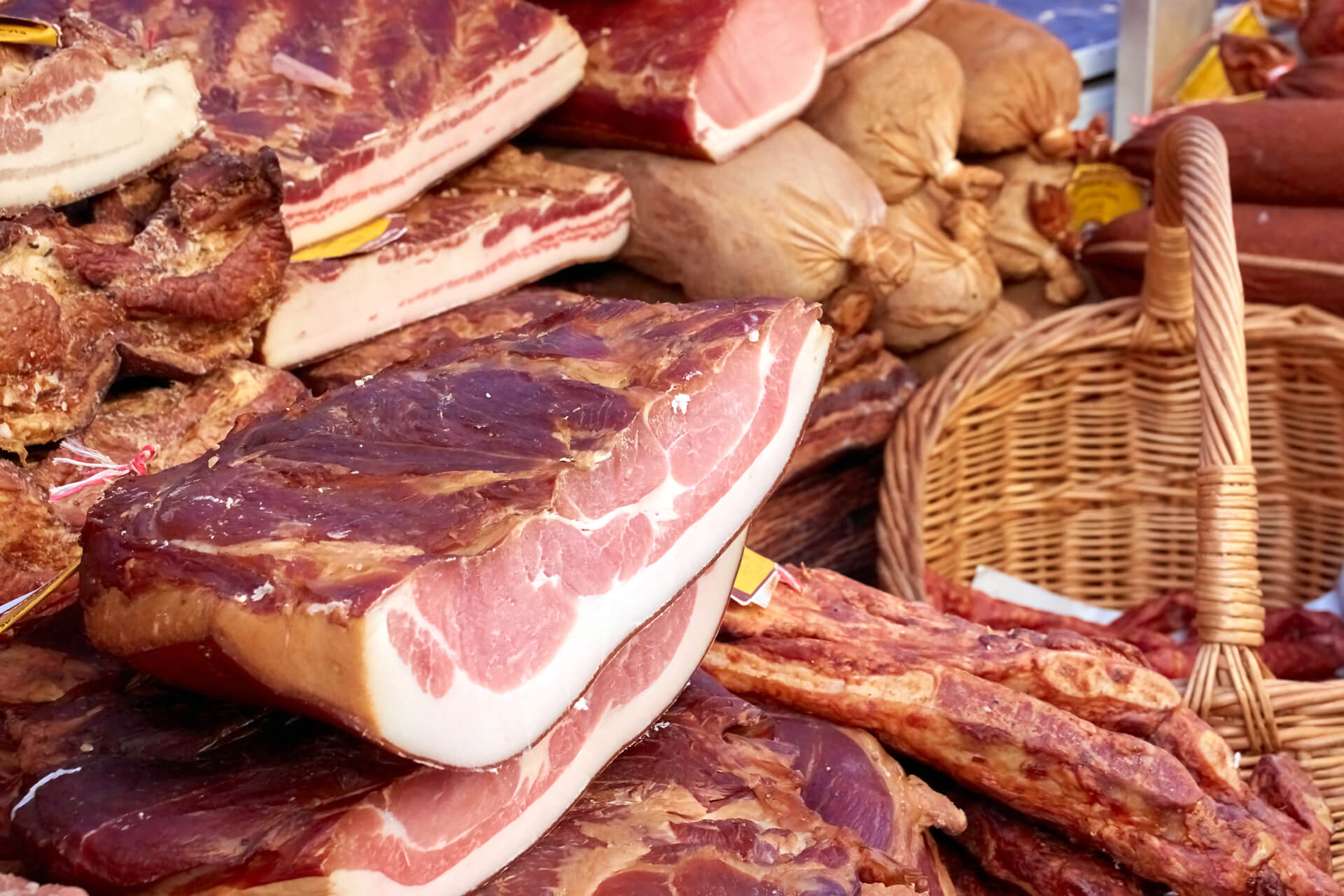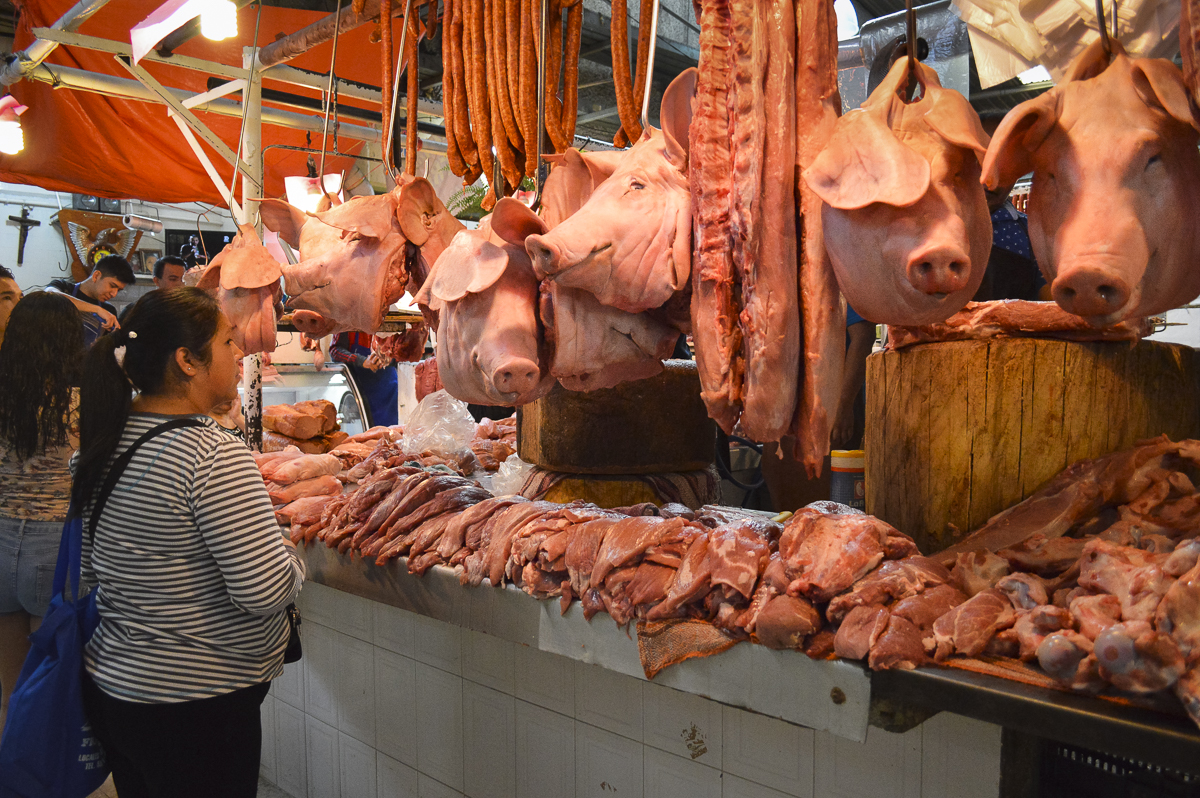Leading Reasons to Patronize Bagley Farms Meat Market Edwardsville IL for Premium Meats
Leading Reasons to Patronize Bagley Farms Meat Market Edwardsville IL for Premium Meats
Blog Article
Discover the Art of the Butcher's Cut in a Modern Meat Market
In the ever-evolving landscape of contemporary meat markets, the butcher's cut has transcended its standard roots, combining age-old workmanship with contemporary methods. Today's butchers are not merely processors of meat; they are knowledgeable craftsmens who highlight sustainability and ethical sourcing. Their knowledge in selecting and preparing cuts tailored to details culinary needs supplies an exceptional eating experience. What absolutely establishes the contemporary butcher apart is their capability to forge a deeper connection between customers and the beginnings of their meat. Just how do these masters balance practice with technology, and what effects does this have for the future of meat consumption?
Evolution of Butchery Techniques
The development of butchery techniques mirrors a rich tapestry of development and adjustment driven by advancements in technology, adjustments in customer need, and a deeper understanding of meat scientific research. Historically, butchery was a craft gave via generations, with methods developed over centuries to make best use of return and flavor. The commercial change ushered in automation, changing traditional techniques and making it possible for large handling.
The mid-20th century saw butchery techniques additionally improved by scientific insights into muscular tissue biology and meat aging, enhancing both inflammation and taste. Innovations like vacuum cleaner packaging and refrigeration prolonged item shelf-life, allowing butchers to diversify offerings and boost quality assurance. This duration additionally marked the surge of specialized equipment, such as band saws and meat slicers, which boosted precision and performance in meat handling.

The 21st century has actually introduced electronic technology into the butchery world. Digital systems currently assist in tracking pet provenance and enhancing cuts to fulfill certain consumer choices. Furthermore, a revival in artisanal butchery has actually emerged, blending traditional skills with modern understanding to deal with consumers looking for honest and sustainable meat options. This evolution underscores a vibrant interplay in between practice and advancement, conference modern demands while protecting the craft's heritage.
Comprehending Meat Cuts
Recognizing the ins and outs of meat cuts is necessary for both butchers and consumers seeking quality and value. Each cut originates from a different component of the animal, imparting special tastes, textures, and cooking methods - bagley farms meat market edwardsville il. Mastery of these differences not only improves culinary experiences but additionally makes the most of the energy of each carcass. For butchers, precise cuts mirror ability and regard for the craft, ensuring marginal waste and optimum yield.

Comprehending muscle mass composition is essential; muscles made use of extra often by the pet have a tendency to be harder and are best suited for slow-moving cooking approaches, while less-used muscles, like those found in the loin, are more tender and suitable for barbecuing or roasting. Knowledge with these distinctions equips customers to make educated selections, boosting their cooking endeavors.
Selecting Top Quality Meat
Selecting the right meat involves even more than just picking an aesthetically enticing item from the display screen. The art of picking quality meat requires a critical eye and expertise of certain features that represent quality and excellence.
Secondly, take into consideration the marbling, which refers to the white flecks of fat within the muscular tissue. Appropriate marbling is a key indication of tenderness and taste, as it thaws during cooking, improving the meat's juiciness. Remember, greater marbling commonly associates with premium quality cuts, such as USDA Prime.
Texture is another vital element; visit this page meat needs to really feel firm to the touch, not slimed or overly soft. Additionally, be conscious of the fragrance. Fresh meat needs to have a clean, neutral smell, devoid of any kind of sour or repulsive smells.
Matching Cuts With Food Preparation Approaches

Alternatively, tougher cuts like brisket and chuck roast are abundant in collagen, which breaks down right into gelatin when cooked gradually. These cuts are suitable for braising or sluggish roasting, enabling the meat to soften with time and create deep, complicated tastes. Similarly, cuts such as brief ribs and pork shoulder make out well with slow-cooking techniques, where expanded cooking times transform their durable structures right into delicious meals.
Lamb shanks and oxtail, which require extended cooking to tenderize, are perfect prospects for stewing or slow simmering. These methods coax out rich, passionate flavors while keeping dampness. By understanding the distinct characteristics of each cut, cooks and home cooks alike can raise their cooking creations, ensuring each meal is both satisfying and unforgettable.
The Butcher's Duty Today
Browsing the developing landscape of the modern-day meat market, the butcher's function today expands beyond simple prep work of cuts. Contemporary butchers are cooking artisans, educators, and supporters for lasting techniques.
In enhancement to crafting precise cuts, butchers now engage directly with customers, using cooking guidance and tailoring options to match private needs and choices. Their know-how in meat aging, marbling, and taste profiles equips customers to make enlightened choices, boosting their culinary experiences. This personalized service exemplifies the butcher's developing function as a trusted expert in the cooking area.
Additionally, butchers are critical in decreasing waste, utilizing whole pets to create varied products such as sausages and supplies. This thorough method not just values the pet but additionally straightens with modern sustainability objectives. This way, the modern butcher embodies both practice and development, adjusting to an ever-changing market while protecting the virtuosity and honesty of their craft.
Conclusion
Mastery in comprehending diverse meat cuts and high quality indicators empowers butchers to supply informed recommendations, aligning particular cuts with ideal food preparation approaches. By recognizing historic methods while welcoming here contemporary demands, the butcher's duty additional hints continues to be crucial in today's innovative meat market.
Report this page